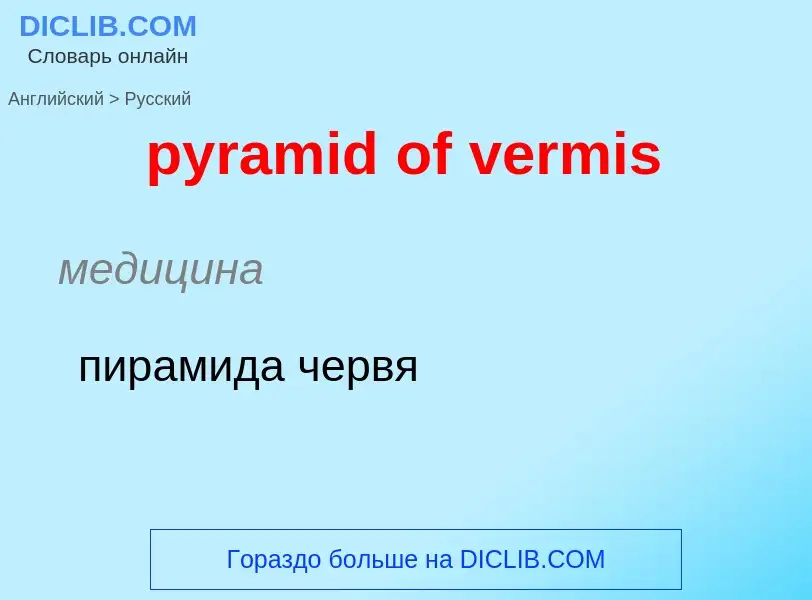Перевод и анализ слов искусственным интеллектом ChatGPT
На этой странице Вы можете получить подробный анализ слова или словосочетания, произведенный с помощью лучшей на сегодняшний день технологии искусственного интеллекта:
- как употребляется слово
- частота употребления
- используется оно чаще в устной или письменной речи
- варианты перевода слова
- примеры употребления (несколько фраз с переводом)
- этимология
pyramid of vermis - перевод на русский
медицина
пирамида червя
анатомия
червячок мозжечка
зоология
средняя часть мозжечка
общая лексика
пирамида биомассы
Определение
.
Википедия

The cerebellar vermis (from Latin vermis, "worm") is located in the medial, cortico-nuclear zone of the cerebellum, which is in the posterior fossa of the cranium. The primary fissure in the vermis curves ventrolaterally to the superior surface of the cerebellum, dividing it into anterior and posterior lobes. Functionally, the vermis is associated with bodily posture and locomotion. The vermis is included within the spinocerebellum and receives somatic sensory input from the head and proximal body parts via ascending spinal pathways.
The cerebellum develops in a rostro-caudal manner, with rostral regions in the midline giving rise to the vermis, and caudal regions developing into the cerebellar hemispheres. By 4 months of prenatal development, the vermis becomes fully foliated, while development of the hemispheres lags by 30–60 days. Postnatally, proliferation and organization of the cellular components of the cerebellum continues, with completion of the foliation pattern by 7 months of life and final migration, proliferation, and arborization of cerebellar neurons by 20 months.
Inspection of the posterior fossa is a common feature of prenatal ultrasound and is used primarily to determine whether excess fluid or malformations of the cerebellum exist. Anomalies of the cerebellar vermis are diagnosed in this manner and include phenotypes consistent with Dandy–Walker malformation, rhombencephalosynapsis, displaying no vermis with fusion of the cerebellar hemispheres, pontocerebellar hypoplasia, or stunted growth of the cerebellum, and neoplasms. In neonates, hypoxic injury to the cerebellum is fairly common, resulting in neuronal loss and gliosis. Symptoms of these disorders range from mild loss of fine motor control to severe mental retardation and death. Karyotyping has shown that most pathologies associated with the vermis are inherited though an autosomal recessive pattern, with most known mutations occurring on the X chromosome.
The vermis is intimately associated with all regions of the cerebellar cortex, which can be divided into three functional parts, each having distinct connections with the brain and spinal cord. These regions are the vestibulocerebellum, which is responsible primarily for the control of eye movements; the spinocerebellum, involved in fine tune body and limb movement; and the cerebrocerebellum, which is associated with planning, initiation and timing of movements.







